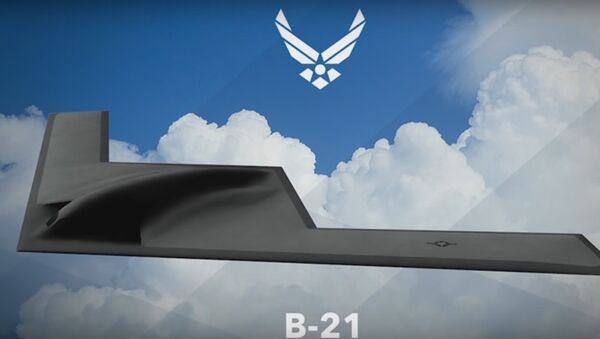"Don't hold me to it, but it's something like 863 days to first flight," US Air Force Vice Chief of Staff Gen. Stephen Wilson told Air Force Magazine for a Wednesday article, noting that he was “counting down the days” in an app on his phone.
Counting forward from his statement, that’s December 3, 2021.
Correction: 863 days from now will make the tentative flight date Dec. 3, 2021. // Proper story coming soon at https://t.co/NquYu9BBTD.
— Air Force Magazine (@AirForceMag) July 24, 2019
Earlier this month, Air Force Chief of Staff Gen. David Goldfein told an audience at the Mitchell Institute for Aerospace Studies that he was “closely monitoring” the construction of the first test aircraft.
The flying wing-design stealth bomber is being built by Northrop Grumman at its Air Force Plant 42 factory near Palmdale, California. Expected to cost $656 million per aircraft, the Air Force has said it wants to buy 100 of them.
The Air Force’s plan, as expounded by then-Secretary of the Air Force Heather Wilson last September in a speech popularly known as “The Air Force We Need,” is to acquire another seven bomber squadrons. While the B-21 is expected to begin functioning as a “useable asset” by 2025, it’s going to be flying alongside Air Force workhorses like the B-1B Lancer and B-52 Stratofortress for years.
To meet Wilson’s expanded fleet goals, the service has set itself to upgrading the B-52’s bomb bay, radar array and engines to extend the lives of their 58 active and 18 reserve aircraft to the year 2050.
However, even with the influx of B-21s, the service will still need more planes:
“The general consensus is, we don’t have enough long range strike capacity,” Gen. Wilson told Air Force Magazine, adding that the Air Force might take “one or two more out of the boneyard,” a vast outdoor storage area for retired aircraft. Since the first B-52 was built in 1952, Boeing has turned out 744 of the massive jets.
Both the B-21 and the B-52 will have that “long range strike capacity” once the Long Range Standoff Weapon (LRSO), an air-launched cruise missile capable of carrying nuclear weapons, for which Raytheon and Lockheed Martin have competing designs, is delivered in 2030.
Without the LRSO, "you don't have the B-52 as a viable platform," Gen. John Hyten, commander of US Strategic Command, told a September 2017 forum at the Hudson Institute in Washington, Sputnik reported. The LRSO is expected to replace the aging air-launched cruise missile (ALCM), which Hyten characterized as "ancient," "difficult to maintain" and "almost impossible to fly."


